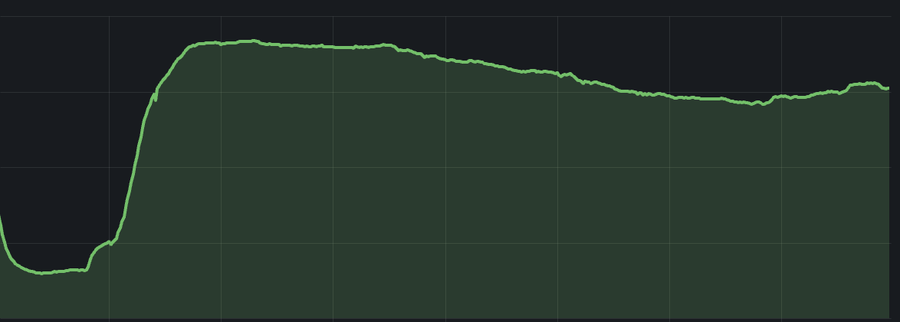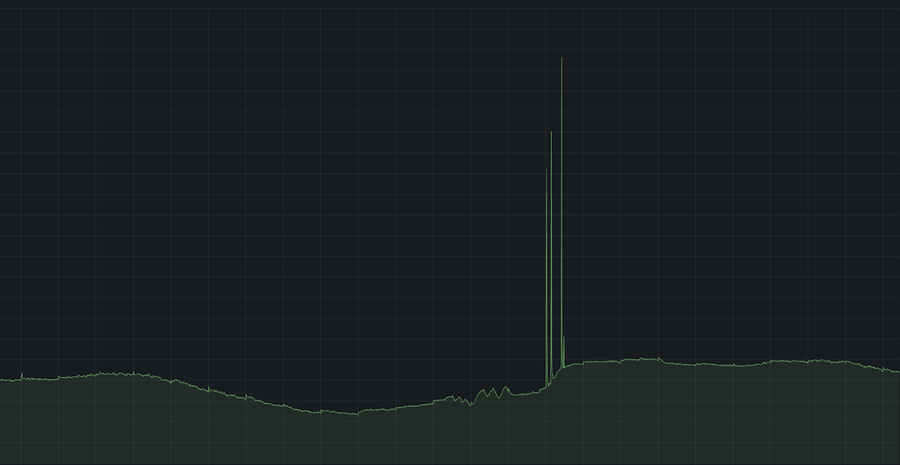Interrupciones, ataques y la necesidad de resiliencia

Director sénior de marketing para desarrolladores

Este trimestre se han producido importantes interrupciones en la nube. Son un recordatorio aleccionador de lo mucho que depende nuestra economía de los servicios de Internet. Tu empresa, o una de la que dependes, podría colapsar por un simple error de configuración o un fallo de software. En Fastly, creemos que los sistemas complejos fallan de formas complejas y que nadie es inmune a ello.
En la mañana del 18 de noviembre, coincidiendo con una interrupción del servicio que se había anunciado de forma generalizada, varios ataques DDoS avanzados se dirigieron sin éxito contra la plataforma de Fastly. Al mismo tiempo, varios clientes importantes transfirieron decenas de petabytes de tráfico a Fastly debido a la interrupción del servicio de otro proveedor.
Puedes ver el evento de ataque y el cambio rápido de tráfico paralelo no relacionado durante aproximadamente una hora:


Junto con el ataque simultáneo y dirigido a la plataforma Fastly
Estos eventos —la mitigación avanzada de ataques y el sistema de recuperación de fallos de tráfico a gran escala— ocurrieron simultáneamente, sin interrupciones para el usuario final. Cuando se gestiona una plataforma moderna y global, los eventos de seguridad y el rendimiento de los clientes se funden en una única misión de resiliencia.
Gestionamos una de las plataformas de producción más grandes del planeta, por lo que no podemos permitirnos separar el rendimiento y la seguridad en nuestro enfoque. Lo que hemos visto en los últimos meses ha dejado claro que la resiliencia ya no puede considerarse un plan de respaldo. Debe ser un principio de diseño.
Una solución multiproveedor para la resiliencia
A la luz de estas interrupciones, una estrategia de varios proveedores ya no es opcional.
Con independencia de si se evalúa un ISP, una empresa de telecomunicaciones, un proveedor de cable, un proveedor de servicios en la nube o una red de distribución de contenidos (CDN), una arquitectura multiproveedor ofrece una mayor resiliencia: menos tiempo de inactividad, menos interrupciones del servicio y escalabilidad global. Además, ayuda a los clientes a disfrutar de la mejor experiencia de usuario posible. Las estrategias multiproveedor proporcionan redundancia, seguridad y margen de rendimiento añadidos, lo que diversifica eficazmente el riesgo y refuerza la resiliencia ante situaciones complejas con multitud de factores. Con los proveedores de infraestructura adecuados, una organización puede sortear estratégicamente las interrupciones, evitar los cuellos de botella y ofrecer aplicaciones rápidamente y con la máxima fidelidad, lo que reduce los riesgos y los costes asociados al tiempo de inactividad a la vez que se garantiza una estrategia de seguridad sólida.
Cómo elegir plataformas que se ganen tu tráfico cada día
Con la solución multiproveedor adecuada, las decisiones se basan en datos contrastados. Los proveedores más rápidos y fiables, que mejoran continuamente los detalles de sus sistemas, son los que acaban imponiéndose con el tiempo. Muchos de nuestros clientes utilizan arquitecturas multiproveedor, un entorno que conocemos muy bien y en el que nos desenvolvemos con soltura.
Esto significa que cada proveedor debe ganarse el tráfico en función de su rendimiento, y no solo de sus promesas. Por eso, cuando otra plataforma tiene problemas y el tráfico cambia repentinamente, nuestros sistemas asumen esa carga adicional sin dudarlo. Estar preparados para los momentos difíciles forma parte de la gestión de una infraestructura moderna a gran escala.
Las plataformas deben diseñarse teniendo en cuenta que se producirán fallos. Lo importante es cómo responden ante ellos.
En la práctica, una plataforma diseñada con esta perspectiva debe tener en cuenta estos requisitos críticos:
Tratar la disponibilidad e integridad como restricciones de diseño de primer orden en lugar de un nivel opcional
Mantén un rendimiento predecible ante cambios repentinos en la demanda o picos inesperados
Mitiga el tráfico de ataques de alto volumen sin sacrificar la disponibilidad para los usuarios legítimos
Adaptarse a la variabilidad a escala de Internet sin introducir latencia innecesaria
Mantener una carga elevada durante eventos de conmutación por error o interrupciones de dependencia
Estas capacidades no se definen por un incidente aislado; surgen de elecciones arquitectónicas, disciplina operativa y un perfeccionamiento continuo a lo largo del tiempo.
Si las recientes interrupciones te han llevado a replantearte el enfoque de tu infraestructura, Fastly puede ayudarte a aplicar las mejores prácticas de diseño resiliente. Nuestra posición como actor y asesor de confianza en este ámbito puede ayudarte a optimizar la alta disponibilidad y la resiliencia con total tranquilidad. Construyamos juntos algo extraordinario.
¿Te interesa obtener más información sobre lo que hace que Fastly sea resiliente? Consulta estos recursos adicionales: